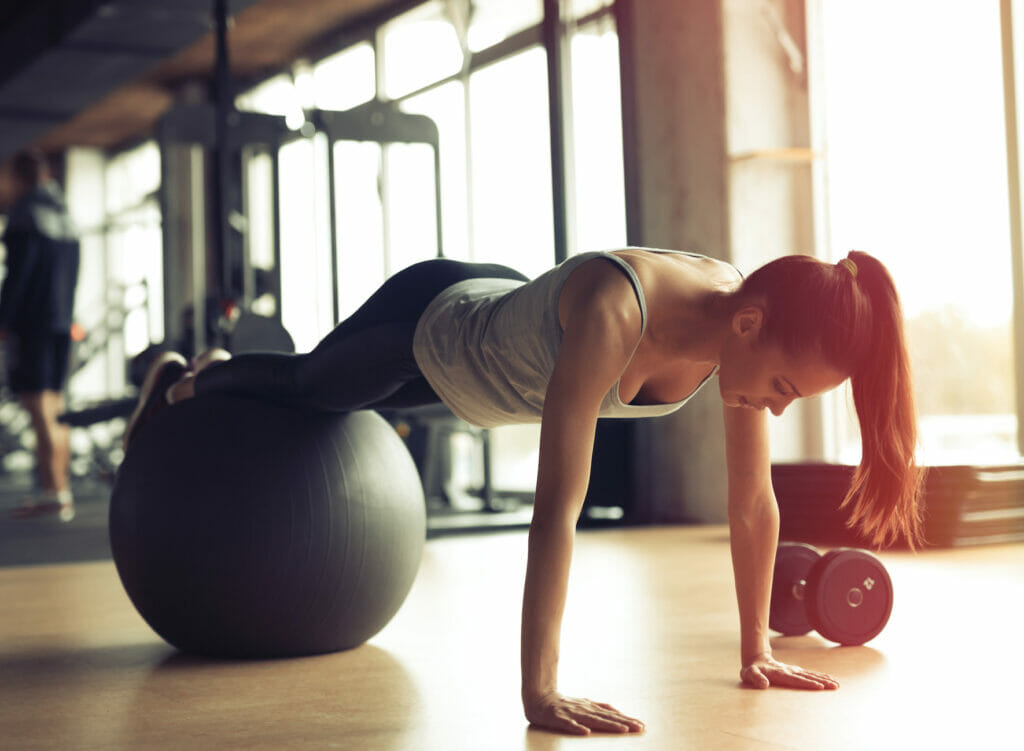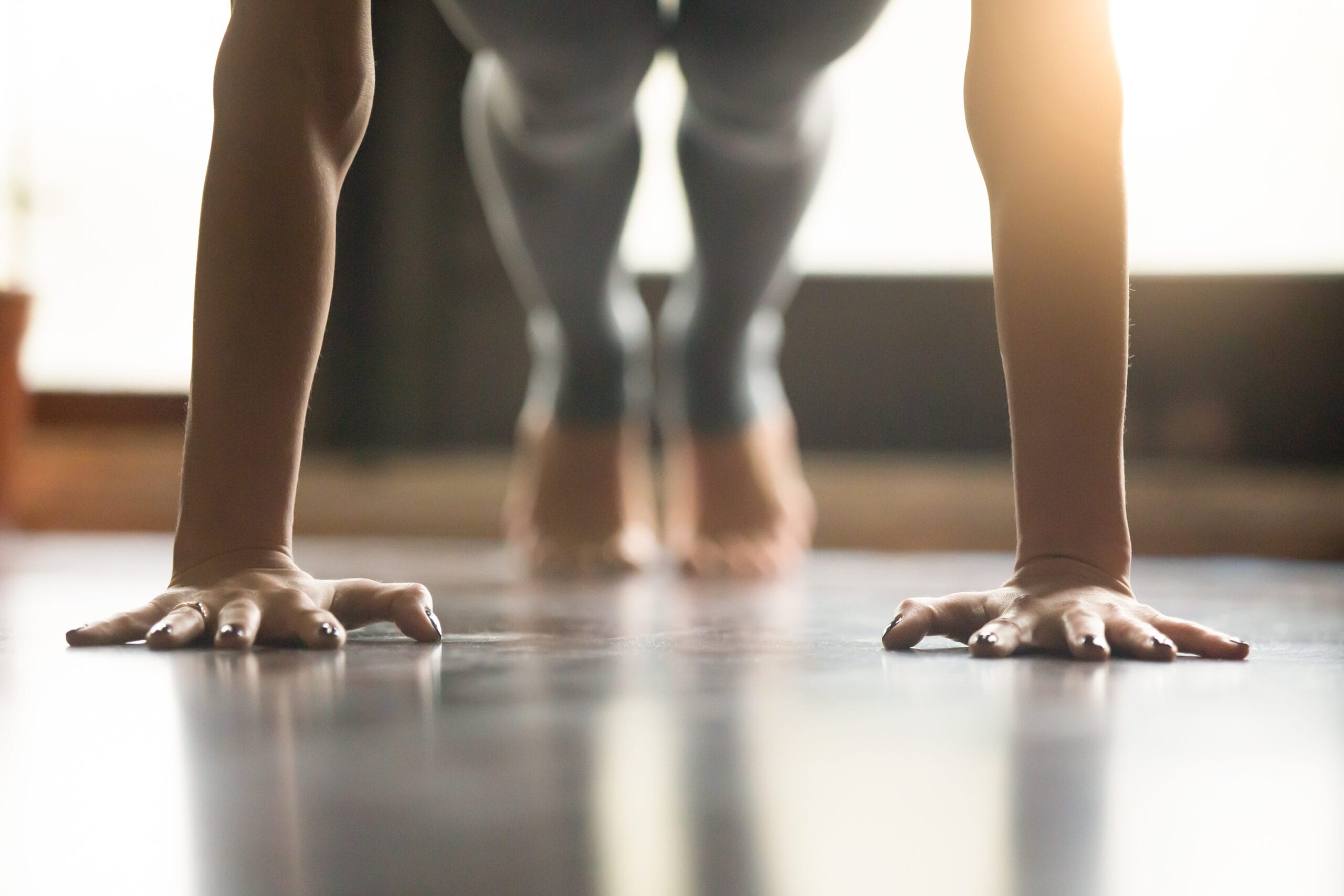
There’s a ton of great fitness equipment out there these days, but that doesn’t mean you need any of it to get a great workout in -which is great news when workout space and/or your budget might be limiting your access to gear.
Luckily, body weight exercises can still be highly effective, especially when trying to strengthen a body part like your shoulders.
If you’re looking to improve your shoulder strength without having to go to the gym or invest in a bunch of weights, give the exercises listed below a try.
Watch out though, they’re harder than you might think.
8 Effective Shoulder Exercises That Don’t Require Weights
Having strong shoulder is beneficial for many reasons, the least of which is looking good during beach season.
More importantly, strong shoulders can improve safety and performance with many daily tasks, as well as improve athletic performance.
Think of how many times you pick something (or someone) up during the day… or how many times you raise something over your head…or how many times you push/press anything with your hands…
All of these activities likely involve your shoulder muscles to some degree.
When we say “shoulders” most of us are talking about the triangle shaped deltoids sitting on top.
The deltoids consist of 3 parts: the anterior, lateral, and posterior heads.
The anterior head is largely responsible for elevating your arm straight in front of you, while the lateral head is responsible for raising your arm to the side.
The often forgotten posterior (or rear) head is in the back of your shoulder and helps extend your arm back and toward your spine.
Even though the delts get all the attention, we shouldn’t forget about the humble rotator cuff, which is actually a group of muscles that start on your shoulder blade and attach to your humerus.
If you’ve ever had a rotator cuff tear or had therapy for shoulder impingement, you’re likely very aware of your rotator cuff.
For the rest of ya, the rotator cuff muscles help with rotating the shoulder (duh), but they also help stabilize the shoulder while doing all kinds of activities.
Without the stabilization effects of your rotator cuff, you wouldn’t be able to comfortably achieve full shoulder range of motion (which folks with rotator cuff issues are well aware of).
When working on shoulder strengthening exercises, it’s usually the delts we’re targeting- well, for healthy shoulders anyway.
As a therapist, if you have healthy shoulders, I don’t think you really need to worry about targeting the rotator cuff specifically because these muscles are already working effectively to stabilize while you’re performing other moves (like the ones listed below).
That said, it’s always a good idea to include some stabilization exercises in your routine to ensure your rotator cuffs stay healthy.
Which reminds me- the exercises listed below are intended for folks who have healthy shoulders and who aren’t dealing with shoulder pain or dysfunction.
In other words- these exercises are not intended for therapy.
If you have pain during these exercises, please don’t do them.
The whole “no pain, no gain” thing is usually wrong to begin with, but this is especially true when it comes to the shoulders. If you feel pain, odds are you’re impinging something in your shoulder
And that’s not a good thing.
Ok, now that we got that out of the way, let’s get to the good stuff.
#1 Arm Circles
I didn’t list these exercises in any particular order, but I think it’s a good idea to start with this one because I bet we all did this move in PE class at some point.
Good ol’ fashioned arm circles are often used as a warm up, but when done correctly you can get a heck of a burn in your delts.
To do this simple exercise, you simply extend both arms out to the sides, keeping your elbows straight, and start making circles (try to keep those shoulder blades low, don’t let them creep up toward your ears).
You can play with size and direction of your circles, but since the only resistance you’re working against is the weight of your arms, duration is the key.
Try this on for size and see how those shoulders are feeling (aim for no rest between transitions):
- 30 sec small circles (forward)
- 30 sec small circles (backward)
- 30 sec large circles (backward)
- 30 sec large circles (forward)
After you’ve finished all 4 directions, take a break for a minute or 2 and repeat as necessary.
(P.S.- this was part of the warm up for P90X workouts, for which I had a love/hate relationship).
#2 Prone Y’s
This exercise and the one below it are used a lot in therapy to improve scapular stabilization, which is a key deficit for a lot of folks dealing with rotator cuff impingement.
(The idea being that if the shoulder blade isn’t stabilizing effectively, it’s going to throw off the way the shoulder blade and humerus are moving together, which can lead to tendons getting pinched).
But it’s also a great exercise to improve overall shoulder strength and mobility.
Prone is just the fancy medical term for lying on your stomach and “Y” is the letter shape you’re making with your arms.
To do this exercise, lie on your stomach with both arms extended about 45° out in front of you (if straight above head is 0 and straight out to the side is 90, 45 will be right in the middle).
Elevate both arms (or 1 at a time) off the ground or up to shoulder height if you’re lying on a table or bench.
The key is to try and squeeze your shoulder blades down and toward your spine as you elevate.
3 sets of 10 is a good place to start.
#3 Prone T’s
The prone “T” is very similar to the “Y” just mentioned, but with your arms straight out to your side (making a “T” shape).
This is another great scapular stabilization exercise, but it’ll also hit your delts, rotator cuff, and rhomboids when done correctly.
My wife’s trainer has been having her do prone T’s and Y’s and it’s been helping manage the tightness and discomfort she often gets in her upper traps and levators.
These are great postural exercises too.
Again, make sure you’re squeezing those shoulder blades together and make sure not to hike those shoulder blades either.
(You can progress Y’s or T’s by changing your position- try performing on a Swiss ball for extra difficulty).
#4 Pike Pushup
Moving away from the more therapy-type exercises, let’s take a look at one of the most difficult body-weight shoulder exercises you can do- the pike pushup.
There are several variations of this exercise. You can do this move with your feet on the floor or with your feet elevated for extra difficulty.
Keep in mind that if you have tight hamstrings like me, you’ll have to keep your knees bent, which might make elevating your feet more difficult.
To do this move, you’ll place your hands in a wide push up position and your feet in a little closer than you would have them for a push up.
Instead of bringing your chest to the floor as you would with a push up, you’re going to bring the top of your head down toward the floor between your hands.
Just make sure to control yourself and not slam your head into the floor.
This exercise takes a fair amount of strength and control to perform, so be careful and progress as needed.
You could start with 3 sets of 5-10 and go from there.
#5 Crab Walk
Yes, I know what you’re thinking and yes, this is the same goofy exercise we had to do in elementary school PE class.
I mean do you remember how exhausting crab soccer was?
Yeah, walking like a crab is a great way to work pretty much every muscle in your upper body and trunk, but it’s especially brutal on your shoulders.
And if you don’t have that giant clown ball at home, don’t worry- just walk around your home (or chase your kids) and it’ll work just fine.
Be especially careful with this one if you have any shoulder problems- when in doubt, take smaller crab steps and make sure not to over extend your arms backward.
Start with 30 sec at a time, aim for 4 sets.
#6 Dips
Bodyweight dips are one of the best upper body strengthening moves around- they’re up there with push ups and pull ups in my book.
And even though dips are usually thought of as targeting the triceps and pecs, they hit the delts pretty effectively too.
Traditional dips are done with a set of handles so you can lift your entire body weight, but this move can be adapted to work with a bench, a sturdy coffee table, or even the floor.
When using a bench/table, you’ll place your hands at about shoulder width and scoot your butt off the edge. Keeping your body close to the table, slowly lower yourself down as far as comfortable, and then return to your starting position.
Having your knees bent makes it easier, knees straight harder.
You can also progress by placing feet on another bench, chair, or Swiss ball even.
#7 Push ups (Standard)
Yup, push ups can strengthen your shoulders too.
This is one of the reasons this exercise is so awesome- it hits damn near every upper muscle there is.
Push ups come in all shapes and sizes. You can play with hand position, foot position, you can elevate your feet, and you can even get airborne.
The push up really is the quintessential body weight exercise- it can be performed anywhere, it can be adapted to challenge folks at any skill level, and it’s effective.
If you’re new to push ups, start with the standard position with your hands slightly wider than shoulder width.
Keep your core tight and try to squeeze your shoulder blades together in the back as you lower yourself to the floor.
Pause for a sec and then return to your starting position.
If the standard position is a little too challenging, you can start on your knees and progress from there.
You could try sets of 10 or to failure, depending on your skill level.
#8 Planks
Planks are a great core strengthening exercise, but they can be used to strengthening your shoulders too.
Folks that have used planks before may have noticed that burning sensation in their shoulders as they continue to hold the position.
There are a lot of different plank positions you can use, but if you’re new to them I’d start with standard plank.
Try them from a push up positions and on your elbows to feel the differences.
When you get comfortable with standard planks, you could progress to doing side planks, where all of your weight is on one arm at a time.
You could also implement different trunk and arm movements while holding the plank position.
Start with 20-30 sec holds and move up from there.
Final Thoughts
Well, there ya have it.
If nothing else, I hope the above exercises show that there plenty of ways to strengthen your shoulders from home without purchasing weights or equipment.
I want to say one more time that you shouldn’t try to push through any shoulder pain you’re having- if these (or any other) exercises hurt, don’t do them.
And if they do, you might want to consider consulting a local physician or physical therapist.
Anyway, I hope this article shows that there’s more than 1 way to target your shoulders- you don’t have to do endless reps of presses and lateral raises.
It’s all about having fun and finding different ways to get your workout in. After all, variety is the spice of life right?
Now get out there and crab walk like you mean it.


